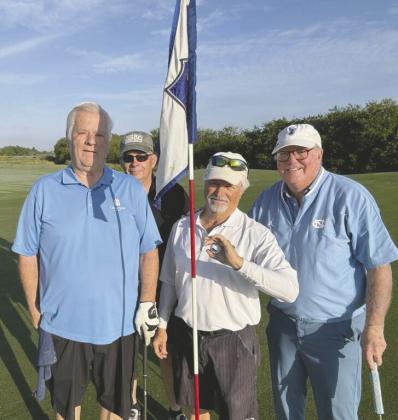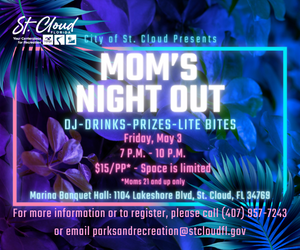Buck Denzer knows how rare a Hole-In-One can be.
The 74-year-old St. Cloud resident has been a serious golfer for 40 years. During all that time, he’d recorded exactly one ace, back in 1991.
Little did he know that thousands of rounds and nearly a quarter century later, something incredible was going to happen.
On March 13, Denzer was playing with his regular group when he approached the sixth hole of Royal St. Cloud Golf Club’s White nine. The pin, just over 155 yards away, was tucked in the back right, without question the hole’s most difficult pin location.
“I normally play a slight fade and when I hit my tee shot, and went it hit in the center of the green with the fade, I knew it had a chance to be close,” Denzer said. “Although I could not see it, two of the guys on my group said they thought it went in. Personally I was wondering if I would ever have another one, but when we realized it went in, we were pretty excited about it.”
Math experts who figure these things out, say that the odds of an average amateur golfer making a Hole-In-One are about 12,500 to 1 and it happens just once in every 3,500 rounds played. So what happened to Denzer the next time he played with the group three days later bent those odds in an astronomical manner.
Denzer again approached White No. 6, and while the pin was in roughly the same location, logging a second ace on the same hole was not on his mind.
“As I’ve gotten older, my game has gone downhill. Right now, I am probably a 20-handicapper. I may a par or two but I am following it with a couple double bogeys,” he said. “About the only thing I didn’t want to do was embarrass myself. But I somehow struck the ball well and saw it hit on right side of the green and kick left towards the hole. I knew it had a chance to be close again, but obviously had no inkling that it had gone in.”
This time, none of his playing partners had any idea about where the shot had finished and when the group approached the green, Denzer said he naturally started looking for his ball by scanning the back of the green and the drop off area behind the hole. He did not see it.
“It was sort of funny because we play closest to the pin on par 3s, and there was (a marker) just about eight inches from the hole and one of our guys went to see who hit the shot when he noticed a ball in the cup. He said, ‘There’s a ball in the hole, I think it’s Buck’s.’
“My thought was no way I just made another one and I started shaking when I approached the hole, but sure it enough, it was my ball. In retrospect, I did start feeling a little bad for who hit within eight inches in the group in front of us. Normally a shot like that would win both the greenie and a skin. But he took it really well and even bowed before me afterwards.”
As for the odds—Hole-In-Ones on consecutive rounds on the same hole of the same golf course with the same group? It’s about 17 million-to-1 (Still about 20 times more likely than winning Powerball or Mega Millions).
As with tradition, Denzer was on the hook to buy drinks for his friends. “After the first ace, the bar tab came to about $140,” he joked. “They took it a little easier on me for the second one.”
Danzer said he did not have an act three to report when he played the hole the next time on Mar. 20. “Hit the tee shot a little fat and came up short, average chip and then two-putted for a more realistic bogey,” he said.




